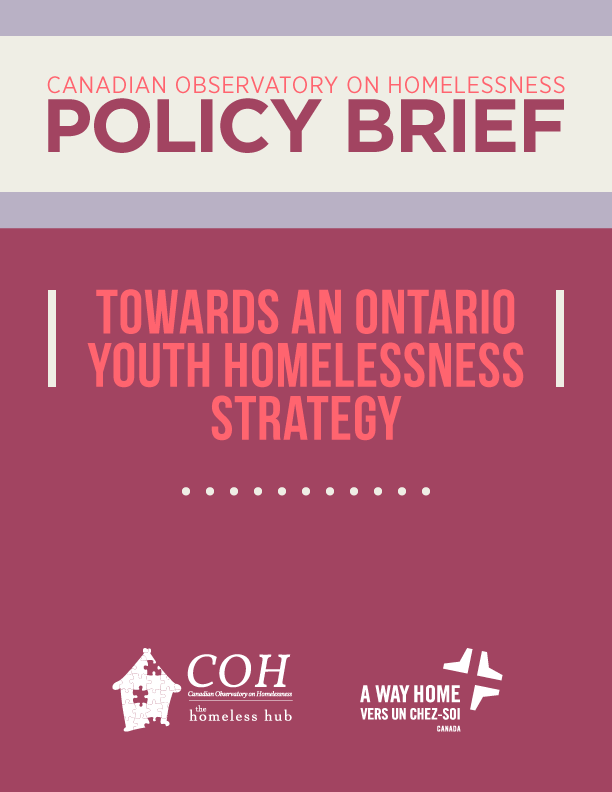Convergence. This is a good way to describe what is happening in Ontario. Things are starting to align in ways that can allow us to go further faster in moving the dial on youth homelessness, but we have to be strategic in how we maximize these opportunities.
So what’s changed? In January 2015, Ontario established an Expert Advisory Panel on Homelessness to provide advice on how to achieve the goal of ending homelessness under the province’s Poverty Reduction Strategy. In response, Ontario committed to a number of immediate and long-term actions, including prioritizing provincial action to reduce homelessness in four areas: youth, Aboriginal, and chronic homelessness, as well as homelessness following transitions from provincially funded institutions and service systems, such as jails, hospitals and child protection.
The focus on youth is key here – Ontario is only the second province in Canada to announce a youth homelessness strategy. This presents a real opportunity for the province to make big progress on addressing youth homelessness. It couldn’t come at a better time, with the Government of Canada also signalling their intent to focus on youth homelessness as well.
What should a provincial response to youth homelessness look like? This week, the Canadian Observatory on Homelessness and A Way Home Canada released “Towards an Ontario Youth Homelessness Strategy”, a policy brief that provides some insights into what the provincial strategy could be.
In this policy brief, we applaud these efforts and offer insights into how Ontario can become a leader in addressing youth homelessness by working with community partners in a strategic and effective manner. An investment in preventing, reducing and ending youth homelessness will pay long term dividends for the province of Ontario. The goal of this work is to help youth avoid the devastating and long-term consequences of homelessness by providing support for young people and their families in order to reduce conflict and violence, to facilitate successful engagement in education and employment, and ultimately to support transitions to adulthood characterized by health, fulfillment and well-being. A strategy to address youth homelessness will not simply result in fewer people who experience homelessness, but rather, contribute to the longer-term reduction in poverty within the province.
One tactic we have employed to support community efforts to align targeted plans to end youth homelessness with provincial efforts is the development of the Youth Homelessness Community Planning Toolkit. This effort, led by A Way Home Canada with support from Canadian Observatory on Homelessness and with funding support from the Province of Ontario, builds upon promising practices and plans to end youth homelessness used in provinces, territories, states and communities across Canada and the U.S. We developed this Toolkit for organizations and/or individuals who are leading the way in addressing the issue in their communities.
Launching on June 8th, the Toolkit will enhance the capacity of communities to prevent, reduce and end youth homelessness by enabling them to go further faster in their planning and implementation efforts. It provides resources and a step-by-step approach to facilitate plan development, incorporating a long-term focus and placing emphasis on the importance of prevention and Housing First for youth. The Toolkit also includes a special Appendix for Ontario Service Managers. Register now for the free Toolkit launch webinar on Wednesday, June 8th led by Dr. Alina Turner and Mary-Jane McKitterick.
Done well, a strategy to prevent, reduce and end youth homelessness will impact on the broader homelessness problem, and help the province achieve its goal of ending chronic homelessness in ten years. An investment that prioritizes the prevention and reduction of youth homelessness will also reduce the likelihood that young people who are homeless become the chronically homeless adults of the future.

